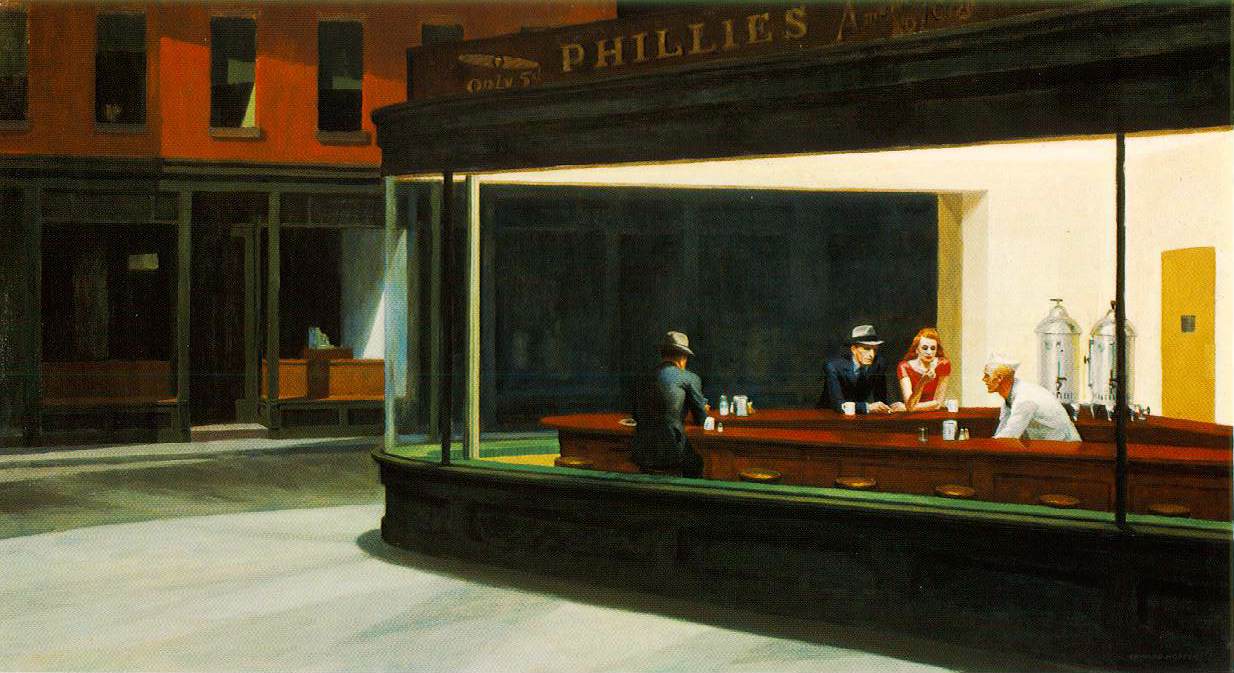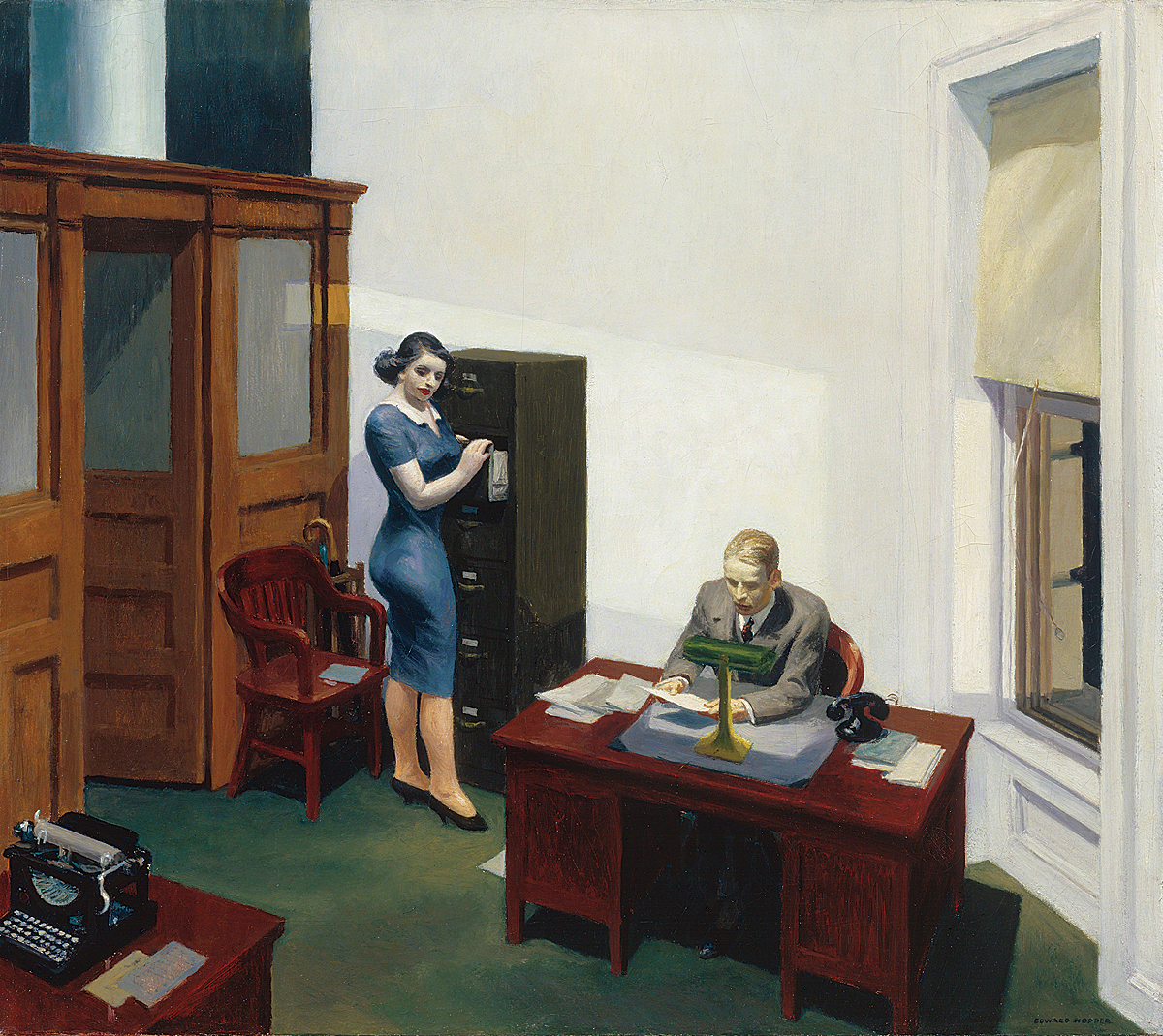“The only real influence I've ever had was myself.” - Edward Hopper (1882–1967)
American painter, printmaker and illustrator, Edward Hopper studied under the social realist painter Robert Henri, who encouraged his students to paint objective realism of everyday life in New York City.
Hopper remained a realistic representational artist, even though abstract art was becoming very popular in his lifetime. While he had no time for abstraction himself, many abstract artists admired his paintings, because Hopper was interested in painting pure forms and playing with 3D space on a flat surface, using light and shadows.
Hopper's interest in capturing the effects of light stemmed from a trip to Paris in 1906 where he was greatly inspired by the rendering of light and shade by the Impressionists. He was fascinated by contrasting influence light and shade had on certain objects, especially buildings and architecture. Hopper once commented, "There is a sort of elation about sunlight on the upper part of a house".
Loneliness and isolation of man in an urban environment is usually the main theme of Hopper's work. He was considered a painter of modernity, but from a detached view. His colours are harsh and cruel, perhaps to capture bleak modern taste. Often his paintings remind us of a stage set, with no actors, because the buildings and rooms seem uninhabited and lack any personal details.
The most intriguing thing about Hopper's paintings, in my opinion, are the characters. They never seem to communicate, never directly looking each other in the eye, each on in their own world. They are almost inanimate mannequins. Hopper also masterfully balances the figures and the background perfectly. One never overcomes the other, the figures are never just animating details of the landscape and the landscape is never just a backdrop for the characters.
Hopper chose the angle of the subjects very carefully, in order to emphasise a sense of alienation and lonely solitude. There is also a lot of empty space in his paintings, he never clutters a scene with any objects he deems unnecessary. The elongated shadows and clean cut areas of light, such as in the painting "Morning Sun", accentuate the amount of empty space (absence of life) and this strikes me as an effective way to convey the psychological space between people. He also painted a lot of scenes at nighttime, under artificial light, devoid of the warmth of natural light, which reiterates a feeling of loneliness and unease that we associate with much of his work.
Hopper's interior scenes are fascinating because they have a kind of "through the keyhole" quality to them. He tried to avoid narrative content at all costs, so there is an ambiguity to his paintings that is very thought-provoking. The composition of his paintings are often arranged so that we are looking for something that isn't there, some other clue to put the pieces together. We are waiting for something to occur and there is often a sense of foreboding, a premonition that we can't quite validate.
Nighthawks
"Unconsciously, perhaps, I was painting the loneliness of a large city" - Hopper
"Unconsciously, perhaps, I was painting the loneliness of a large city" - Hopper
"Summer Evening"
"Morning Sun"
"Office at Night"
"Automat"
"Room in New York"
"House by the Railroad"
This is perhaps one of my favourite Hopper paintings. The rendering of sunlight on the house is exquisite, the sheer contrast between light and shadow, and I love the fact that it is set in a completely empty landscape, no neighbouring houses, no trees, no mountains in the distance.
This is perhaps one of my favourite Hopper paintings. The rendering of sunlight on the house is exquisite, the sheer contrast between light and shadow, and I love the fact that it is set in a completely empty landscape, no neighbouring houses, no trees, no mountains in the distance.







